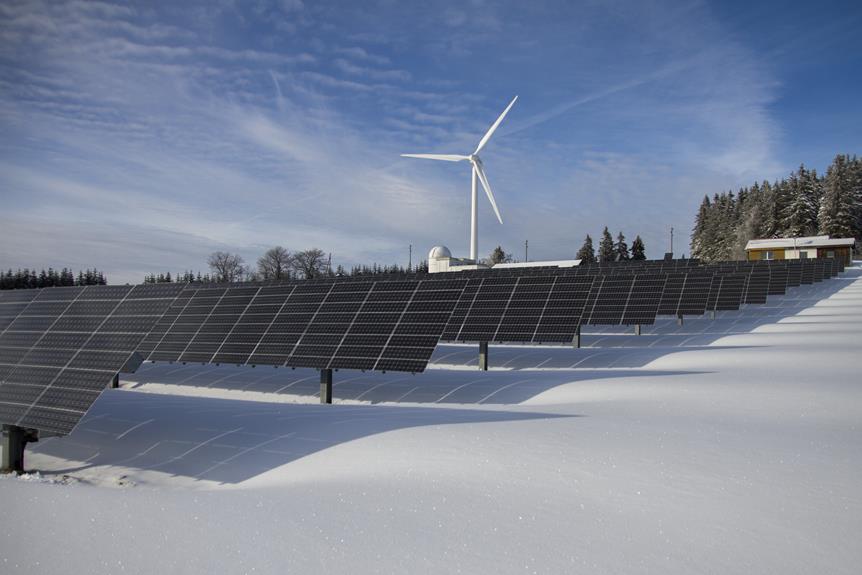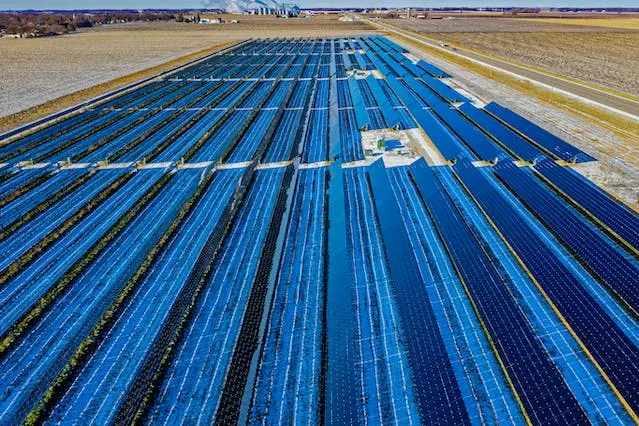As the sun casts its generous rays upon the earth, so too does the topic of solar cells shine a light on the complex interplay of economics and technology in your quest for sustainable energy solutions.
You’re likely aware of the environmental benefits of solar power, but have you considered the full financial scope of your investment? From the initial outlay for the panels themselves to the intricacies of installation costs, government incentives, and the eventual returns on your investment, there’s a wealth of factors that determine the true cost of solar cells.
While the sticker price may offer a glimpse, it’s the hidden expenses and savings over time that paint the complete financial picture. Let’s embark on a clear-eyed exploration of these costs, ensuring you’re equipped with the knowledge to make an informed decision about the role solar energy will play in your life.
As you weigh the long-term benefits against the upfront costs, you might find the landscape of solar economics as shifting and intriguing as the clouds that occasionally obscure the sun.
Listen To The Summary
Initial Investment Breakdown
Delving into the initial investment for solar cells, you’ll find that the bulk of your upfront costs are tied to the panels themselves, alongside essential components like inverters and mounting systems. These components are crucial for the effective capture and conversion of solar energy into electricity, and their quality is often reflected in the price.
Material sourcing plays a significant role here, as the procurement of high-grade materials like pure silicon for photovoltaic cells can be costly.
Moreover, efficiency factors also affect pricing. Panels with higher efficiency ratings typically command a higher price because they generate more electricity from the same amount of sunlight, leading to quicker returns on your investment. It’s important to consider these efficiency factors as they directly influence long-term savings and the overall impact of your solar installation on the environment.
Installation and Labor Expenses
Beyond the hardware, you’ll also need to factor in the substantial installation and labour costs that accompany setting up your solar cell system. It’s not just about purchasing panels; it’s ensuring they’re properly installed to serve the community for years to come.
Installation isn’t a one-size-fits-all process; it varies depending on roof suitability. Your roof’s structure must support the panels, and sometimes enhancements are necessary to meet this prerequisite. This can affect the overall cost and should be assessed early on.

The installation workforce is a skilled trade, requiring electricians and roofers who understand the intricacies of solar technology. They’re not just labourers; they’re professionals who ensure your investment is secure and compliant with local regulations. These labour costs can represent a significant portion of your total expense, but they’re essential for safe and efficient operation.
Don’t forget about maintenance costs, either. Though solar cells are relatively low-maintenance, periodic check-ups by professionals will ensure optimal performance and longevity of your system. This is part of stewardship—caring for your investment responsibly to continue benefiting others without unexpected interruptions.
Incentives and Subsidy Impact
While the initial outlay for solar cells can be steep, numerous incentives and subsidies are available to significantly reduce your investment costs. Governments worldwide recognize the environmental benefits of solar energy and offer various forms of financial support to encourage its adoption. By taking advantage of these opportunities, you’re not only serving your financial interests but also contributing to a cleaner, more sustainable future for everyone.
Here are three key incentives that can make going solar more affordable:
- Tax Credits: Many countries offer tax credits for installing solar panels, which directly reduce the amount of tax you owe.
- Rebates and Grants: Some regions provide upfront rebates or grants that lower the initial cost of solar panel systems.
- Feed-in Tariffs: In certain areas, you can get paid for the excess electricity your solar cells generate and feed back into the grid.
Understanding tax implications is crucial, as these can affect your net savings. Moreover, the environmental benefits of switching to solar aren’t just about feeling good; they’re about actively participating in the stewardship of our planet. The incentives are designed to make this transition more accessible and rewarding for you.
Long-Term Financial Analysis
Assessing the long-term financial benefits of solar cells reveals that your initial investment can pay off significantly over time. By embracing solar energy, you’re not only serving the environment but also paving the way for potential savings that can be directed towards other community-serving endeavours.
|
Year
|
Cumulative Savings
|
|---|---|
|
5
|
Moderate
|
|
10
|
Substantial
|
|
15
|
Significant
|
|
20
|
Exceptional
|
When considering the long-term financial analysis, you must take into account not just the cost savings from reduced utility bills, but also maintenance costs and performance degradation. Solar panels typically come with a warranty of 20-25 years and have a lifespan that can extend well beyond that, with only a slight decrease in efficiency each year. This degradation is usually around 0.5% per year, meaning that after 20 years, your panels should still operate at about 90% of their original capacity.
Moreover, maintenance costs for solar panels are relatively low. They generally require little more than occasional cleaning and an annual check-up to ensure everything is functioning correctly. By investing in solar power, you’re committing to a future where the dividends of your initial outlay multiply, fostering a legacy of sustainability and financial wisdom.
Market Dynamics and Bulk Pricing
Understanding market dynamics and bulk pricing can significantly reduce the cost of solar cells, making your investment even more cost-effective. When you’re looking to serve your community by incorporating renewable energy sources, it’s vital to know how the market works and where you can find financial efficiencies.

Here are three critical points to consider:
- Volume Discounts: Purchasing in larger quantities often results in lower per-unit costs due to economies of scale. Suppliers are more willing to offer discounts when they’re moving more products.
- Tariff Implications: Stay informed about current and upcoming tariffs on imported solar technology, as these can affect overall costs. Being strategic about when and where you source your solar cells can lead to substantial savings.
- Technological Advancements: Keep an eye on the latest in solar technology. Advances can mean more efficient cells that provide better value for money, as well as potential price drops on older models.
Frequently Asked Questions
How Do Solar Cells Impact the Local Ecosystem and Biodiversity During Their Lifecycle?
You’re considering solar cells’ lifecycle; their land usage can disrupt local ecosystems. Yet, they also offer opportunities to create pollinator habitats, serving both energy needs and biodiversity. It’s a delicate balance to maintain.
What Are the Ethical Considerations in the Sourcing of Materials for Solar Cell Production?
You must consider material equity and labour practices when sourcing solar cell materials. Ensuring ethical procurement supports communities and promotes fairness in an industry dedicated to serving our planet’s future.
How Do Solar Cells Perform in Extreme Weather Conditions, Such as Hurricanes or Hailstorms?
You’ll find solar cells undergo durability tests for extreme weather, ensuring reliability. In hurricanes or hail, they may sustain damage, potentially affecting your insurance premiums, but they’re generally designed to withstand severe conditions.
What Are the Recycling Protocols and End-Of-Life Disposal Methods for Solar Cells?
You’ll find that solar cell disposal is governed by regulations ensuring material longevity and environmental safety. Learning about proper recycling protocols is key to serving your community’s sustainability efforts effectively.
Can Solar Cells Interfere With the Aesthetics of Historical or Cultural Landmarks When Installed?
You may find that solar cells can disrupt a site’s visual harmony without careful building integration, particularly at historical landmarks where maintaining the original aesthetic is crucial for cultural preservation.
Conclusion
In conclusion, transitioning to solar energy involves a careful examination of both upfront costs and long-term benefits. The initial investment, which includes the panels, inverters, and mounting systems, can be substantial, but the use of high-grade materials and higher-efficiency panels can lead to quicker returns on investment.
Installation and labour costs, while significant, ensure the system’s safe and efficient operation. Government incentives, such as tax credits, rebates, and feed-in tariffs, can significantly offset these costs. Over time, the savings from reduced utility bills, coupled with low maintenance costs, can make solar energy a financially wise choice. Understanding market dynamics and bulk pricing can further reduce costs.
By considering all these factors, you can make an informed decision about the role solar energy will play in your life, contributing to a sustainable future for all.



